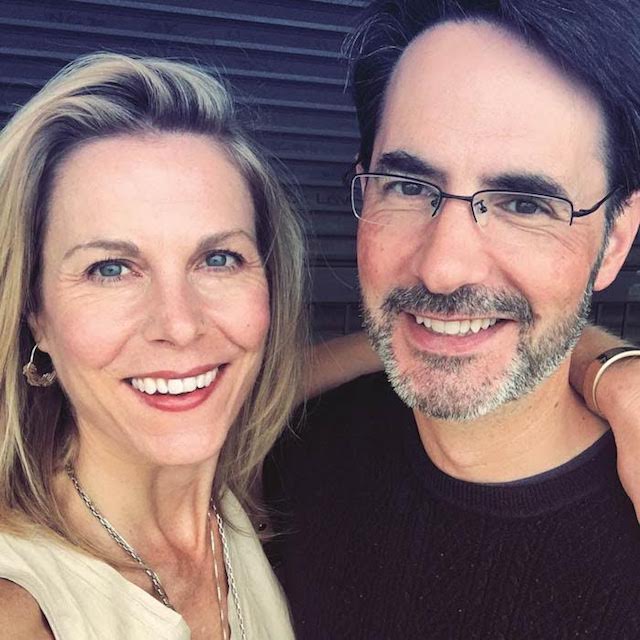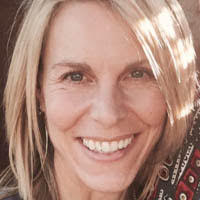
What does it mean to take a stand for what you truly want? Would you risk everything for a love you weren’t sure even existed?
For 22 years my marriage was “okay.” Okay as in good enough, lukewarm. What had started with great chemistry evolved into a (mostly) peaceful co-parenting and cohabiting partnership.
He was a good man and a good father. He was reliable, consistent, loyal, and kind. And though there was no passion, I knew he’d never leave me. Though he never expressed a desire for me (nada, zilch) I knew he loved me.
When our kids were young, this was fine. The disconnect between us hardly even registered, I was so overwhelmed with the day-to-day of mothering and working.
Little by little, the lifelessness of my marriage began to weigh on me. I began to have the itchy, irritable feeling that there had to be more. I didn’t know what it was. I didn’t know how to articulate it and I knew I didn’t like what I was having. Sort of like ordering blind, being served a meal you don’t like, and not knowing the restaurant’s menu. You don’t know what you might have asked for instead.
I’ve always been a seeker, so I did what I do best—I began searching. I delved into women’s sexuality and sensuality. I studied with spiritual teachers, deepened my meditation practice, learned about the yoga of sexuality. I found intimacy experts and worked with therapists.
I discovered in my searching that I wanted to co-create a vibrant life and spiritually-sexy intimacy with my partner. I wanted a man who wanted me. I wanted to know what it felt like to be desired. I wanted to feel fully awake and alive in my marriage—and to be with a man who felt and wanted the same.
I began to see examples of this in other peoples’ lives but had no idea how to create it for myself. My partner wasn’t on the same page, so to speak. Though he was willing to go to therapy, we would find ourselves having the same conversation again and again—me wanting more, him wanting nothing. Me feeling chronically dissatisfied, him feeling judged and attacked.
I can’t say I blame him. My early approach to enlisting him to work on our marriage was along the lines of nagging, complaining, and blaming. In my better moods it might have been called cajoling.
When I had more energy to pour attention into igniting our relationship, a little light (really couldn’t be called a fire) might flicker. I’d be hopeful that things were looking up. The moment I got busy with work, or kids, or anything else in my life we’d go back to the previously scheduled program of passionless cohabitation.
I rationalized that I ought to be content with “good enough.” I’ve been blessed in so many ways, perhaps my marriage would be the place where I just had to compromise in my life and accept lackluster. The vision, and particularly the longing, for a deeper joy in partnership never went away.
I knew enough at that point in my journey to know—emotionally and spiritually speaking—that if it’s in my life, I’m contributing to its creation. And, “if it’s meant to be, it’s up to me.” I used tools like The Work by Byron Katie; A Course in Miracles; 12-step inventory; the teachings of everyone from Pema Chodron to Mama Gena, Louise Hay to Lynne Forrest.
I learned to ask myself, “How am I responsible for what I am experiencing?” I had to ask myself how the “story” I saw “out there” (i.e., a passionless marriage with a man who didn’t share my desire to wake-up) was reflecting what I felt or believed about myself.
Of the many truths I discovered, I realized that I did not believe joy is my birthright. I took no responsibility for claiming, creating, or owning my joy. All this time I was thinking my husband’s disinterest, disengagement, and disconnection was the cause of my problems, when in truth I was not showing up for myself. Not in the way that counts, the way that makes real change possible.
I can now say that joy is a regular part of my day, a common feature in the landscape of my life. And that getting to this point required resolve. A total commitment. In order to experience a change in my marriage I had to commit to my own joy. I had to be willing to put myself first, to take a stand for myself. To commit to and honor my desire as worthy, necessary even.
When I was ready to commit 100 percent to my longing for a vibrant, authentic intimacy with an equally-passionate partner, I had the sick-to-my-stomach realization that I would need to make a choice: If my partner did not want to come along, I silently made the vow that I would sacrifice my marriage.
I was no longer coming from a place of anger or resentment or finding him wrong but 100 percent dedicated to my own happiness. I had resolved that my fulfillment was worthy and essential, even if I had no idea how to get there from where I was.
This is when our relationship shifted. Suddenly—and I mean in the space of months—he wanted something more in our relationship and in his life. After decades of professing his disinterest in the kind of emotional/spiritual evolution that has been my sole purpose in life, he realized he had been living asleep and wanted to wake up.
While I take no credit for his life’s path, this I know: he may never have made the decision to wake up, never gotten tired of his own resistance, had I not made the commitment to myself to move toward all that I wanted in an intimate relationship.
Committing to joy is what I call being a spiritual badass.
It’s a move that requires resolve. It’s a move that requires faith. When we take a stand for joy and own wherever were are, we liberate ourselves and everyone around us, and bring our life into alignment with the highest good. It requires a kind of steely acceptance and equanimity: those who want to go on that joy-ride with us, will. Those who don’t or can’t, won’t.
Will you take a stand for your joy?
Author: Kristy Scher
Image: Author’s Own
Editor: Travis May








Read 6 comments and reply